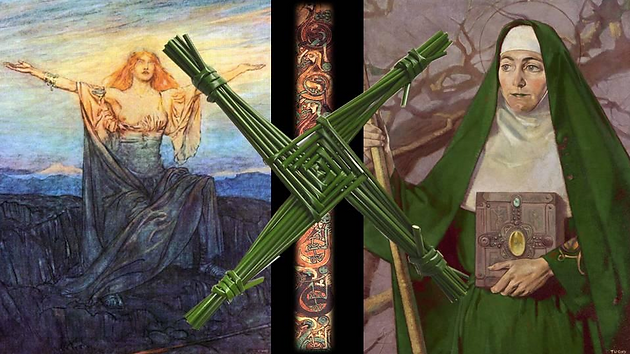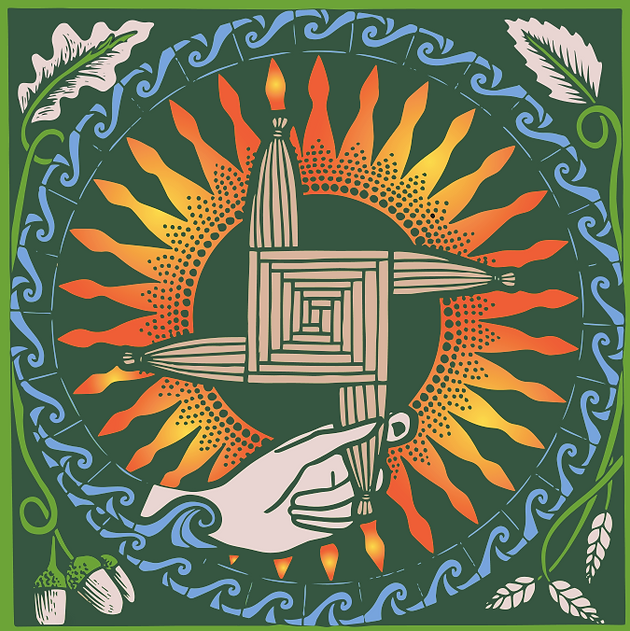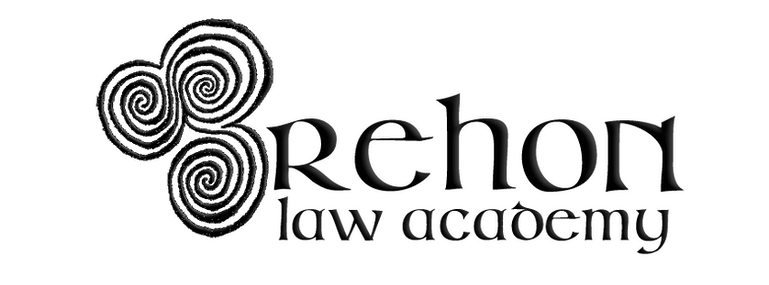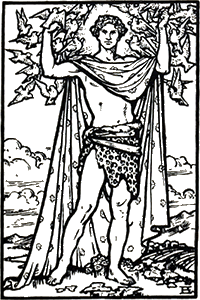Traditionally, Imbolg (or Imbolc) was celebrated on the 1st-2nd February to mark the beginning of Spring and the midway point between the winter solstice and spring equinox in early Gaelic society.
Given the time of year, it is a celebration of rebirth, fertility, gratitude for surviving winter and optimism for the spring to come.
Though the celestial holiday is no doubt ancient, one of the earliest mentions of it in the Irish manuscripts comes from a 10th C. poem about ewe’s milk. It is thought that the holiday may therefore relate to the breeding season for sheep. The word Imbolc is from old Irish, ‘i mbolc,’ meaning in the belly. It is commonly accepted that this refers to the pregnancy of ewes.

The celebration is associated with Brigid. In ancient times a pagan goddess but later Christianised into a Saint Brigid. The holiday remains hers.
Goddess Brigid was a daughter of Dagda, the father-god of the Tuatha de Dannan. She has two sisters, also named Brigid, though it is believed these represent three aspects of the one divinity. Brigid was commonly invoked in fertility rites and was a beloved goddess of the learned classes of poets and historians.

She is said to have been born with a flame on her forehead and has always been associated with fire. Her sacred fire temple once stood in Kildare (cill dara, meaning ‘church of the oak’) and housed an eternal flame. Today, a Christian monastery houses Brigidine nuns who tend to the flame.
In homage to the goddess turned saint, followers would make effigies to symbolise her made from reeds and rushes, a custom that continues to the present day.
-----------------------------------
To celebrate Imbolc and the coming of Spring, the Brehon Law Academy is giving access to our online course Irish Mythology for only 14.99














